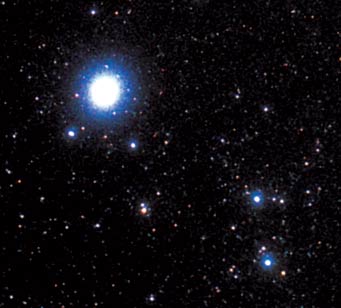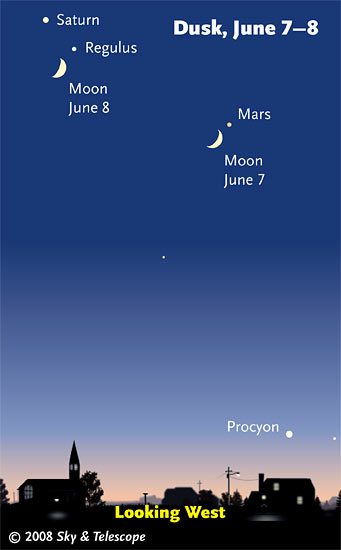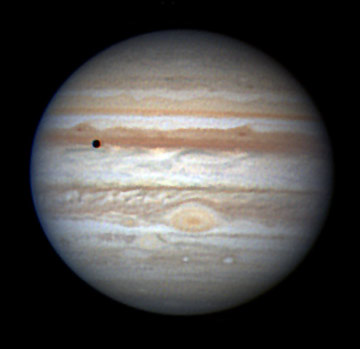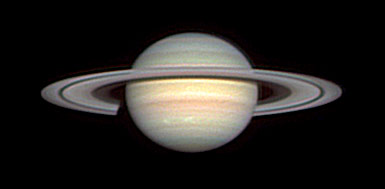Some daily events in the changing sky for May 30 – June 7.
Comet Boattini remains visible from the Southern Hemisphere this week. It's crossing Puppis and Canis Major low right after dusk. The comet had reached magnitude 5.7 by late May. See our article and finder charts.

Bright Vega dominates the little thumb-sized constellation Lyra, currently dangling to Vega's lower right.
Akira Fujii
Friday, May 30
Saturday, May 31
Don't know where it is? It's the brightest star a little more than a fist-width to the upper right of Spica after dark. Get out your monthly fold-out constellation chart in Sky & Telescope.
Sunday, June 1
Monday, June 2
Tuesday, June 3
Wednesday, June 4
If your scope is on an alt-azimuth mount and has trouble getting worked around near the zenith, wait for the Dipper's handle to get a bit lower later in the evening.
Thursday, June 5
Friday, June 6
Saturday, June 7

The waxing Moon, in its monthly march away from the Sun, poses first with Mars and then with Saturn and Regulus. (These scenes are drawn for the middle of North America. European observers: move each Moon symbol a quarter of the way toward the one for the previous date. For clarity, the Moon is shown three times its actual size.)
Sky & Telescope diagram
Want to become a better amateur astronomer? Learn your way around the constellations. They're the key to locating everything fainter and deeper to hunt with binoculars or a telescope. For an easy-to-use constellation guide covering the whole evening sky, use the big monthly foldout map in each issue of Sky & Telescope, the essential magazine of astronomy. Or download our free Getting Started in Astronomy booklet (which only has bimonthly maps).
For many people, the next step is observing with binoculars. Why? They're easier, cheaper, and more convenient than a telescope, and they show a wide field that's both right-side up and "correct" (not mirror-imaged). The map-using and eye-training skills you develop using binoculars to find faint, interesting targets among the constellations are exactly the skills you'll need to use a telescope well.
To put either binoculars or a telescope to good use, you'll need a detailed, large-scale sky atlas (set of maps; the standards are Sky Atlas 2000.0 or the smaller Pocket Sky Atlas) and good deep-sky guidebooks (such as Sky Atlas 2000.0 Companion by Strong and Sinnott, the even more detailed Night Sky Observer's Guide by Kepple and Sanner, or the classic Burnham's Celestial Handbook). Read how to use them effectively.
More beginners' tips: "How to Start Right in Astronomy".
This Week's Planet Roundup
Mercury and Venus are lost in the glare of the Sun.
Mars (magnitude +1.5, in Cancer) shines high in the west after dark, to the lower right of the Saturn-and-Regulus couple as shown above. Mars is drawing nearer to them every week. They'll all have a close get-together in early July. In a telescope, Mars is a minuscule 4.9 arcseconds wide — a very tiny blob.

Jupiter on May 24th. The North Equatorial Belt, above center, "is getting lighter in color from the deep dark red a few weeks ago," writes photographer Christopher Go. The black dot on it is the shadow of Io. Visible below center are not just one red spot but three; see article. The Great Red Spot remains near System II longitude 121°. North is up (though many telescopes show south up).
Jupiter (magnitude –2.6, in eastern Sagittarius) rises around 11 p.m. daylight saving time, with the Sagittarius Teapot to its right. It's highest in the south before dawn, so that's when to hope for the clearest views in a telescope — especially considering Jupiter's southerly declination this year.
Saturn (magnitude +0.7, in Leo) glows in the southwest after dark, about 3° above fainter Regulus (magnitude +1.4), as shown above. They're gradually getting wider apart now.
Uranus and Neptune (magnitudes 6 and 8, respectively, in Aquarius and Capricornus) are in the east and southeast just before dawn. Use our article and finder charts.
Pluto (magnitude 14.0, in northwestern Sagittarius) is well up in the southeast by midnight. If you've got a big scope and ambition to match, use our article and finder chart.

In a large amateur scope during excellent seeing, a pair of white storms has been visible in Saturn's South Temperate Zone. This stacked-video image was taken at 11:15 UT on May 1, 2008, when the System II longitude on the central meridian was 70°. North is up.
Christopher Go
All descriptions that relate to your horizon or zenith — including the words up, down, right, and left — are written for the world's mid-northern latitudes. Descriptions that also depend on longitude (mainly Moon positions) are for North America. Eastern Daylight Time (EDT) equals Universal Time (UT, UTC, or GMT) minus 4 hours.
---------------------
To be sure to get the current Sky at a Glance, bookmark this URL:
http://SkyandTelescope.com/observing/ataglance?1=1
If pictures fail to load, refresh the page. If they still fail to load, change the 1 at the end of this URL to any other character and try again.
 0
0
Comments
You must be logged in to post a comment.